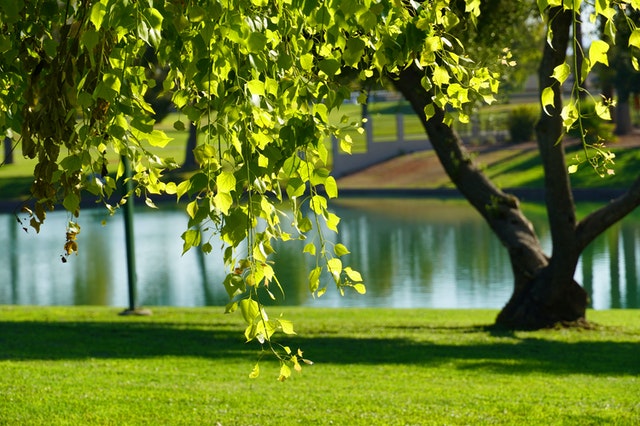1301 Shattuck Avenue, Berkeley, California 94709, United States
Live Oak Park is a public park and recreation area of the city of Berkeley , California, located in the center of several North Berkeley neighborhoods, 5.5 acres of nature juxtaposed with facilities that make up the heart of the area. It's a place where playgrounds, basketball and tennis courts, an indoor theater and the Berkeley Art Center share space with native oaks and California Bay Laurels, quiet shady picnic areas, a spacious grassy knoll and the lovely Codornices Creek that flows through the park. Live Oak Park is one of the oldest and most naturalistic public parks in Berkeley.
Live Oak Park sits on both sides of Codornices Creek like a narrow green belt on 1301 Shattuck Avenue, on Berryman Street between Shattuck Avenue and Oxford Street. Walnut Street runs through the middle of the park as Codornices Creek meanders through its native oak grove, accented here and there with large, old specimen trees originally planted in the original gardens that preceded the park.

Live Oak Park is located here because of the many small creeks that flow down to San Francisco Bay from the Berkeley Hills. These little creeks are more powerful than they look like. As the rising sea level filled the current Bay at the end of the last Ice Age, the creeks basically built what are now the flatlands, carrying rock and soil that had been eroded by the earthquake-ridden, still-rising hills.
Codornices Creek is one of those original creeks that run out of the Berkeley Hills in the San Francisco Bay Area of California. In its upper section, it passes entirely within the limits of the city of Berkeley and, further downstream, marks the city boundary of the adjacent town of Albany in its lower section. The name of the creek is derived from the Spanish word "codornices" which means "quails." California valley quail was once common in the area. The name was given to one of the Peralta family, once the owners of the vast San Antonio Rancho.
In the early days of Berkeley, one of Berkeley's early settlers, Napoleon Bonaparte Byrne, acquired a vast area that now encompasses Life Oak Park and its neighborhoods and stretches over the top of the Berkeley Hills. He and his family, and Pete and Hannah Byrne, two former slaves who had been freed before the journey west, made a long trek from Missouri across the continent to settle on the banks of the Codornices Creek and start farming their 800 acres. Because Byrnes had invested in an agricultural venture in the Delta, they began selling their Berkeley property piece by piece, beginning in 1873.
Henry Berryman bought the Byrne House with ten acres adjacent to it and became known as Berryman 's Place. Henry Berryman, owner of the Berkeley Waterworks, built the Berryman Reservoir (still located a few blocks above Live Oak Park) and also extended the steam train line north on Shattuck to Vine Street (Berryman Station), both as a measure to increase the desirability of his North Berkeley lots. Some of the first houses built there are still standing today.
When Henry Berryman subdivided the extensive Byrne lands in the 1870s, two parcels on Codornices Creek remained untouched and developed as a private estate. To the north of the creek was the home of Michael O'Toole, and to the south was owned by Russell Penniman. On March 10, 1914, the City Council approved an ordinance appropriating $72,500 for the purchase of property in order to establish a City Park. At that time, Berkeley, like many other American cities, had been swept up by the City Beautiful Movement, and had recently commissioned a report on city planning, which revealed a lack of public parks.
The town took formal possession of the property on July 1 and the still unnamed park was opened to the public with an appropriate ceremony. For the next two weeks, everyone's mind was to choose a name for the new park, and suggestions were published almost every day in the Berkeley Gazette. Among the names proposed were "Penniman," "Berryman," and even "Whitehall" (the name of the home of Bishop Berkeley). The City Council adopted "Live Oak" on July 14, 1914. Several years later, the park was extended one block to Oxford Street, and the Codornices Creek and its native and established tree groves were preserved.
When the Penniman Clubhouse burned down in 1951, the city built the Live Oak Community Center, the Live Oak Park Recreation Center, the Shattuck & Berryman Social Hall, Berkeley, California, where groups such as the Berkeley Folk Dancers have their home. The Berkeley Art Center is now located on the east side of the Walnut Street Bridge. Live Oak Park is a public park free of charge. There is a public toilet between the tennis court and the park; there is a picnic area with a stone fireplace and other activities for single persons and groups. You can find a quick and easy way to search and register for programs and classes on the Internet.
This amazing child-friendly park is just one of the many must-see sights you don’t want to miss in Berkeley, California:
All of these wonderful parks are situated just a short distance from our location at 1647 Hopkins St, in Berkeley! Stop by for a visit anytime!